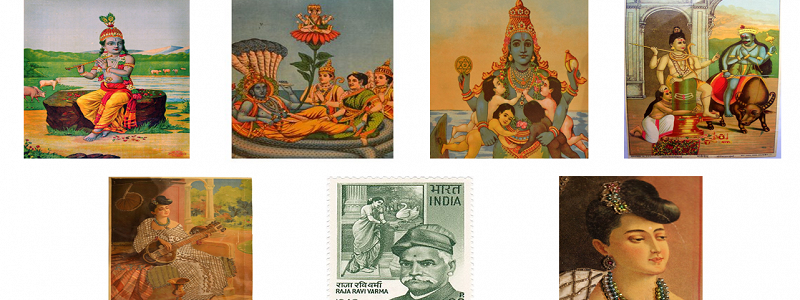Raja Ravi Varma - Kerala’s greatest artist in modern times.
Saraswati is the goddess of wisdom, learning, music, and the arts. She is usually depicted with her musical instrument, the vina. Her mastery of the instrument not only reflects her knowledge of music but the role of the Goddess as the power that creates the universe. In this capacity, the notes of her vina represent the sacred syllables of the Sanskrit language, which are believed to lie behind all material forms.
By the end of the 19th century, lithographic presses in Bombay were printing mass copies of pictures of the Hindu deities and scenes from the Purana mythology. These devotional lithographs were often called ‘calendar art’ because they were sold as calendars with tear-off paper dates. Inexpensive and widely available, they were a truly folk art that celebrated a charming meeting of traditional Indian religious piety with what was then the latest in modern Western scientific technology.
The most popular and widely known artist and manufacturer of such lithographic prints was Raja Ravi Varma, who was closely related to the royal family of the kingdom of Travancore in southern Kerala, Maharajahs ruling from the royal palace of Thiruvananthapuram (formerly known as Trivandrum). Working together with his brother, Raja Raja, Ravi Varma opened his first lithographic printing press in Bombay in 1894. Ravi Varma's use of a single perspective in his artwork was influenced by photography, and his general style clearly shows the influence of romantic Victorian oil portraiture, as exemplified by the pre Raphaelite school.
Lithographic prints of deities were often used at home in puja worship. This print of Saraswati is elaborately decorated and includes the initials of the original owner. It was common practice for lithographic prints to be enhanced with textiles, beads, sequins, glitter, and gems which caught the candlelight dramatically, serving to better attract the invoked deity during puja.





